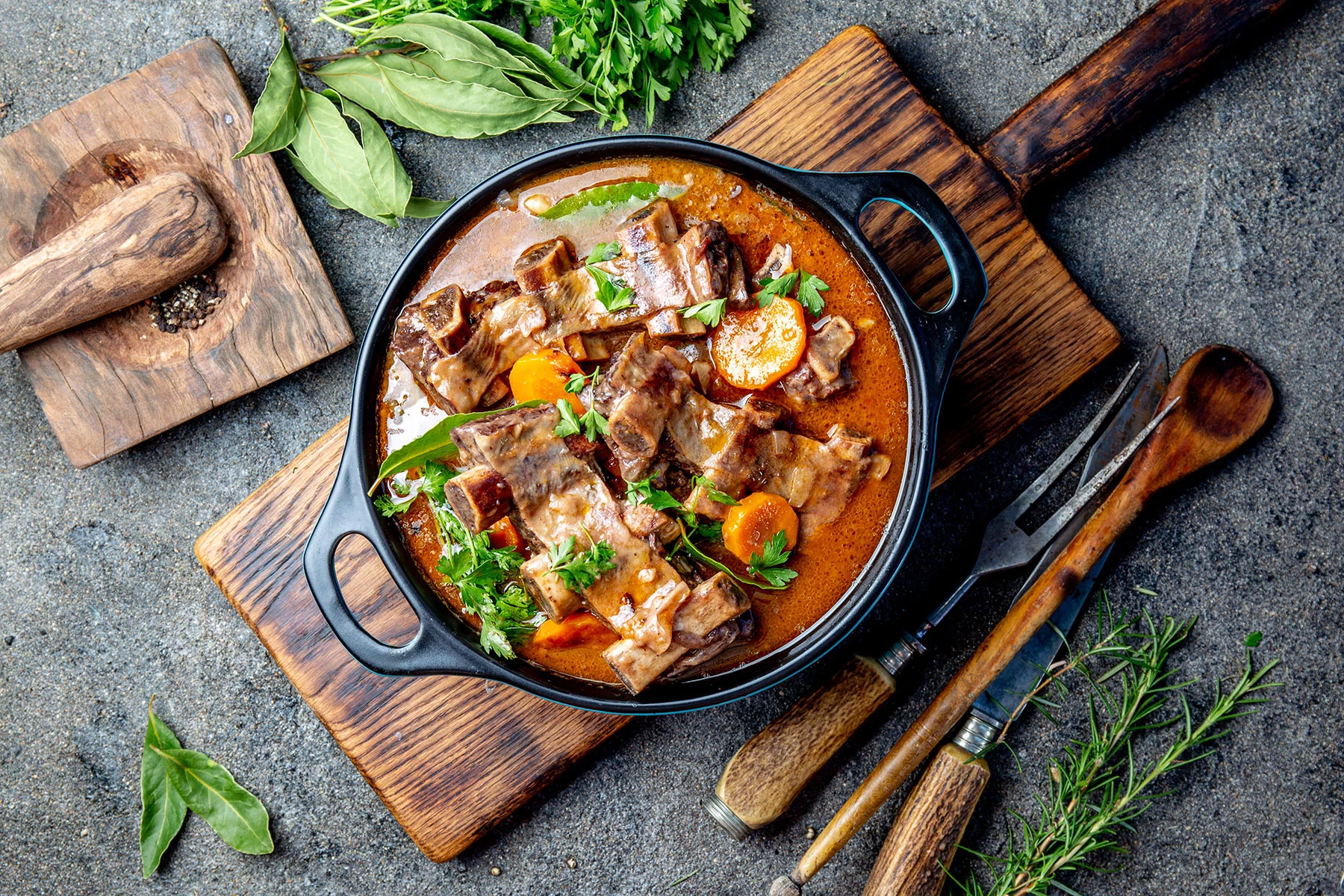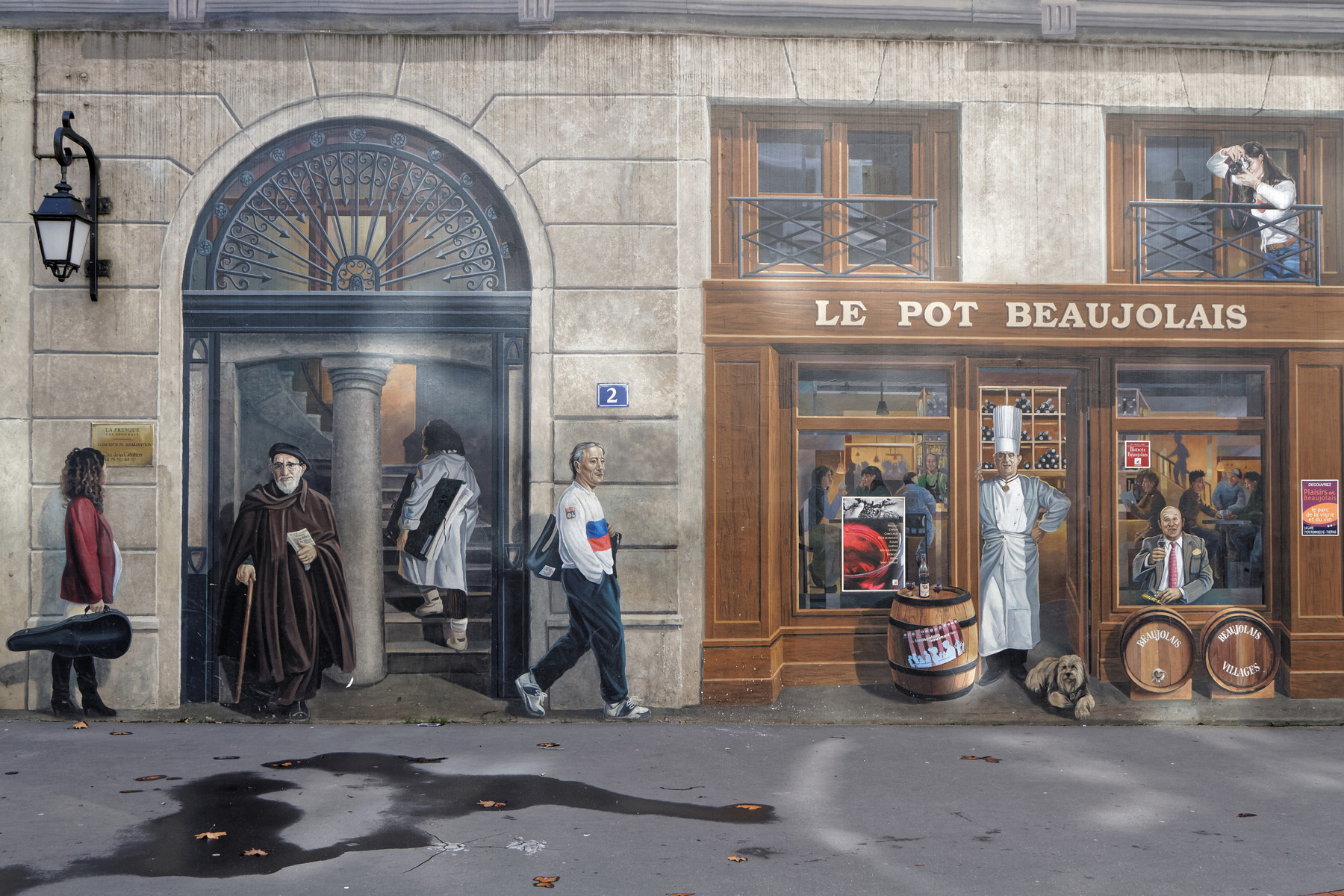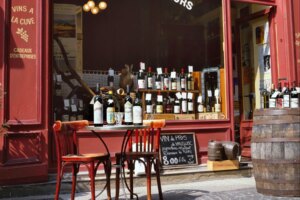It’s no secret that the French are mad about cheese. In fact, the country ranks fourth when it comes to cheese consumption around the globe. With the average French person eating around 27.2kgs of the stuff per year, it’s fair to say that you won’t be short of options when the dairy cravings hit.
Indeed, fromage is an integral part of French culture and embodies centuries of savoir-faire and culinary tradition. At mealtimes, it also has its own course, wedged between the main dish and the dessert. And, of course, cheese has even made its way into the French phrasebook: to be “triste comme un repas sans fromage” is to be “as sad as a meal without cheese.”
Allianz Travel
Get insured for your next trip with Allianz Travel. A world-leader in travel insurance, their tailor-made plans will safeguard you on your trips within and beyond France. Whether you’re planning a weekend-getaway or moving your life overseas, have complete peace of mind wherever you go with Allianz Travel.
French cheese diversity
Naturally, each region of France has its own terroir-driven varieties of cheese which truly capture a sense of place through distinctive flavors. And if you fancy sampling a taste of France through one of its most beloved food items, this guide explains the different types and textures of French cheese, with a focus on the most artisanal options: AOC (Appellation d’Origine Contrôlée) and farmstead (fermier) cheese. From creamy Brillat-Savarin to pungent Munster, there is a wheel, chunk, and wedge to please everyone.
Cow’s milk cheese
Cantal
One of the oldest cheeses in France, Cantal dates back to Roman times. It was once served at King Louis XIV’s table, but today it is as popular as ever. Cantal comes in three varieties: buttery jeune (young, 1-2 months), entre deux (between 3-8 months) with hints of hazelnut and vanilla, and vielle (old, over eight months), which is as tangy as a fine, sharp cheddar.

Made in large sizes to feed farmers and their families throughout the winter, this cow’s milk cheese is fabricated from November to April. Fermier (farmstead) versions use raw milk while laitiers (dairies) use pasteurized milk. Cantal is named after a department in the heartland of volcanic Auvergne.
Locals say this central French region has more cows than people, so there’s plenty of Cantal to go around. It’s delicious when eaten as slices or on sandwiches. Likewise, it’s wonderful when melted in a gratin or aligot, a regional dish of puréed potatoes and cheese.
Brillat-Savarin
This decadent French cheese is known as the “foie gras of fromage” due to its luxurious, buttery, and slightly salty flavor. It gets its richness from the added cream, which is known as triple-crème. This has a three-prong effect: it boosts the fat to 75%, gives the cheese its luscious texture, and mellows out the lactic sharpness. And to add even more deliciousness, the downy, white rind adds a hint of mushroom.

Brillat-Savarin gets its name from the French epicurean who famously quipped “a dessert without cheese is like a beautiful woman without an eye.” Renowned cheese maker Henri Androuet created Brillat-Savarin between the two world wars by adding extra cream to Excelsior cheese. Originally from Normandie, this cow’s milk cheese is now crafted in Burgundy and Île-de-France, which surrounds the nation’s capital, Paris.
French goat’s milk cheese
Banon
Banon is a truly terroir-driven cheese. It is flavored by the fragrant garrigue on which the goats graze and wrapped in local chestnut leaves. Cheese-makers have crafted this raw goat’s milk cheese in the Provence hills since the first century. In fact, legend has it that the Roman emperor Antonin Le Pieux consumed so much that he ate himself to death!
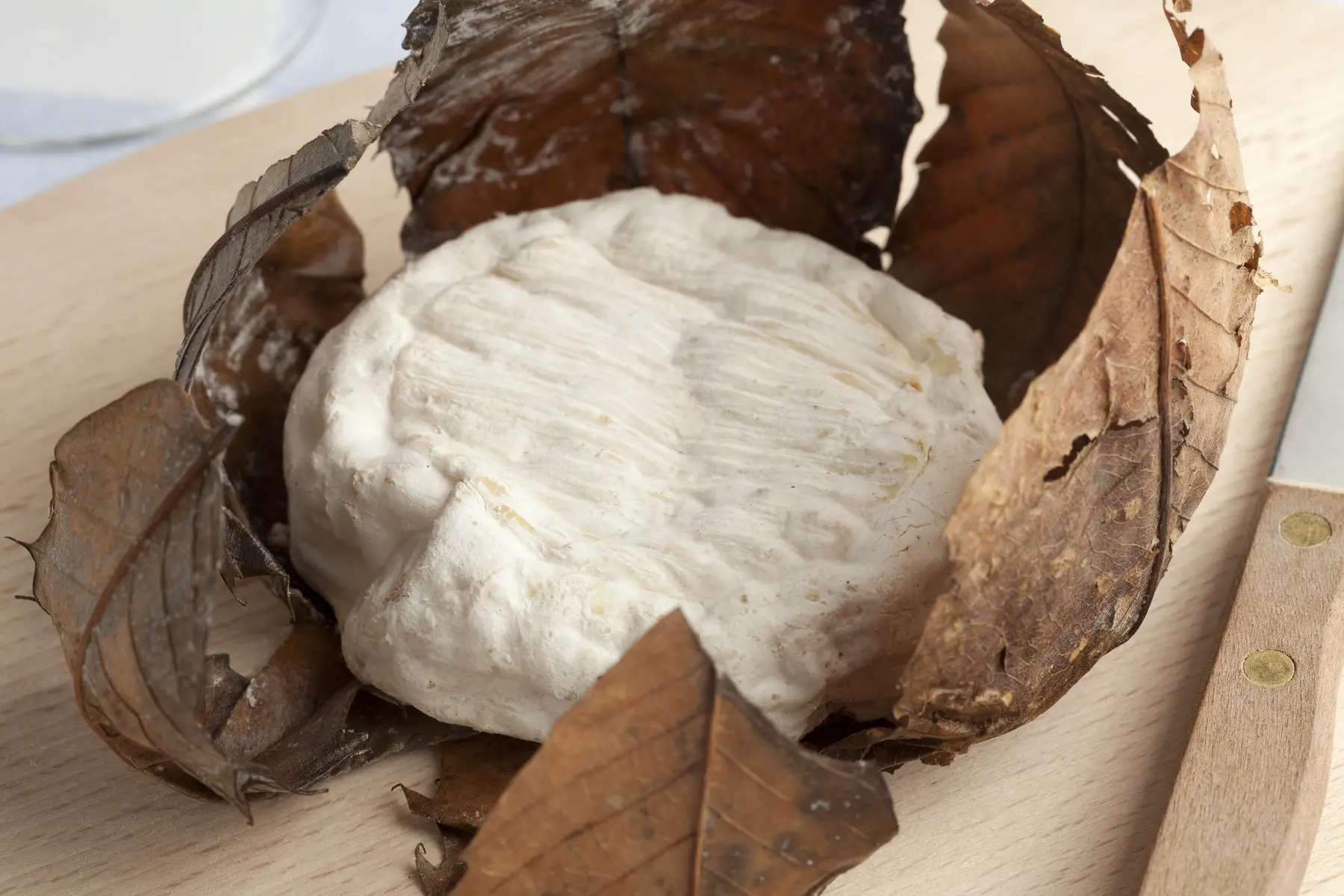
When young, puck-shaped Banon is wonderfully unctuous and creamy – you can practically eat it with a spoon. Its goaty aromas also become more pronounced with time. But whenever you eat it, the tannin in the chestnut leaves imparts the nutty, fruity flavor that is so special to this cheese. But why chestnut leaves? Well, they protect the cheese during the harsh winters when the goats don’t produce milk. Locals gather the fallen leaves in autumn and soak them in vinegar or water. They then wrap the cheese into brown bundles tied in raffia twine.
Banon comes from the charming village for which it is named. Nestled in the Alpes-de-Haute-Provence, the region is blanketed in an herbal scrubland on which the goats happily graze. Banon has one of the smallest productions of AOC cheeses, so if you can, make sure to try it.
Chabichou du Poitou
Taller than traditional discs of goat cheese, this cylindrical chèvre stands out at the fromager. Its shape comes from the wooden stoppers that seal local wine barrels. Chabichou du Poitou is coated in a thin, buttery rind, which is sometimes tinged with gray fungus. However, the real magic lies inside. Its creamy, velvety interior is so dense that it could be white-chocolate fudge. When it is two weeks old (or young – jeune), the semi-soft cheese is sweet with a touch of salt and lemon. After six weeks of aging (affiné), the taste intensifies with mushroom and goaty flavors.
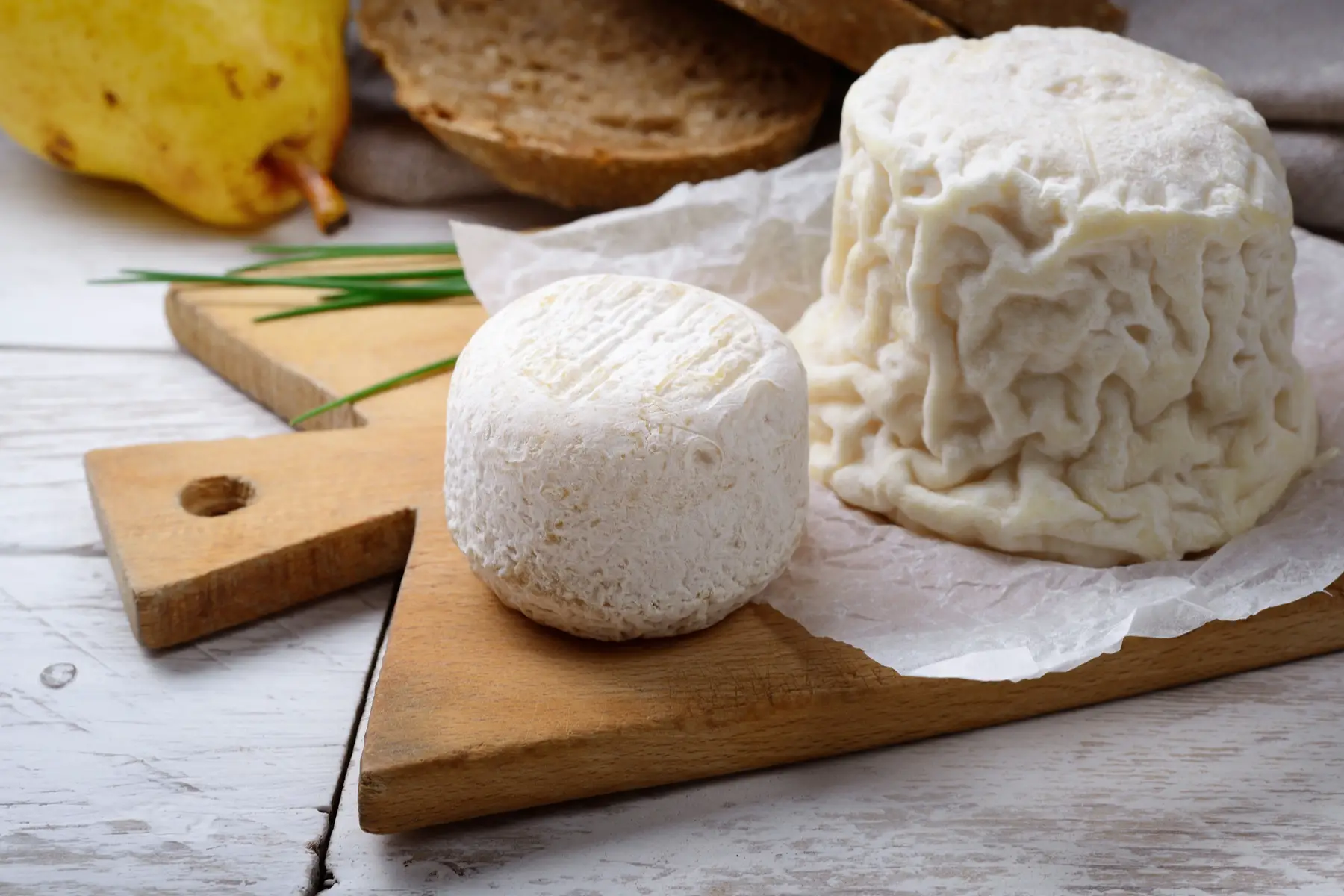
Chabichou du Poitou hails from Haut-Poitou, a region south of the famed Loire River in western France. Here, the lush pastures are dotted with clover, alfalfa, and herbs that infuse the goat milk with grassy notes. This French cheese, as well as the goats, hark back to the eighth century. At that time, Arab armies occupied the region (“chebli” is “goat” in Arabic.) In the 16th century, legendary writer François Rabelais declared Chabichou de Poitou to be the “Best Cheese in France.” Over four hundred years later, it is still as beloved as ever.
Sheep’s milk cheese
Ossau-Iraty
With its olive notes and somewhat oily texture, Ossau-Iraty is one of the most savory French cheeses on the market. This melt-in-your-mouth brébis (sheep’s milk cheese) has nutty and toasted wheat undertones. Not only that, but it is high in butterfat content which makes each bite wonderfully rich. Ossau-Iraty is one of the easiest cheeses to pair. For instance, you can enjoy it with traditional pâte de coing (quince paste) or black cherry jam. Interestingly, Roquefort is made with the same sheep’s milk on the other side of the Pyrenees.

Lesser known outside of France, Ossau-Iraty is actually one of the oldest European cheeses. Remarkably, records date as far back as 3000 B.C. In the 14th century, Ossau-Iraty was even used as currency between shepherds and sharecroppers. It is made in the Ossau Valley in Béarn and the Iraty Massif in the Basque country, but production methods differ depending on the region. For instance, in arid Basque cellars, the cheese is rubbed with a dry brush. However, the humid Bearn cellars require a damp cloth and saltwater. Both methods create the edible rind that helps you to identify which region it is made in: gray for Basque, and reddish-orange for Bearn.
Brocciu
Ask a Corsican about Orcu, and they will happily tell you the tale of the menacing ogre who was trapped by shepherds. To save his life, Orcu gave them a secret recipe that he created – Brocciu. This sheep’s milk fromage is similar in taste and texture to ricotta. However, unlike the whey-based Italian cheese, it has added milk and is almost lactose-free. Creamy and crumbly, you can eat it from just a few hours up to a month after it is made.

The fresh (frais) version is delicious in omelets, stuffed in pastries, or mixed in fiadone, the island’s famous cheesecake. It is best to strain the younger versions in a cheesecloth to remove any excess liquid, and ideally, you should save the more pungent Brocciu Passu (aged at least 21 days) for after dinner.
At that time, Corsicans serve it with two of the island’s other delicacies – fig jam or chestnut liqueur. Brocciu plays a vital role in Corsican cuisine and culture. Consequently, 19th-century writer Émile Bergerat penned “he who has not tasted it, does not know the island.”
Blue cheese from France
Roquefort
Made with full-fat, unpasteurized sheep’s milk, Roquefort is affectionately known as the “King of the Blues” across France. In this blue-veined (pâte persillée) classic, the white part is salty, creamy, and slightly sweet. The blue veins, on the other hand, impart a sharp, savory flavor. Together, they create a mouthwatering combination that pairs beautifully with meat. Sweets such as honey, dried fruit, and apples also soften the sharpness.
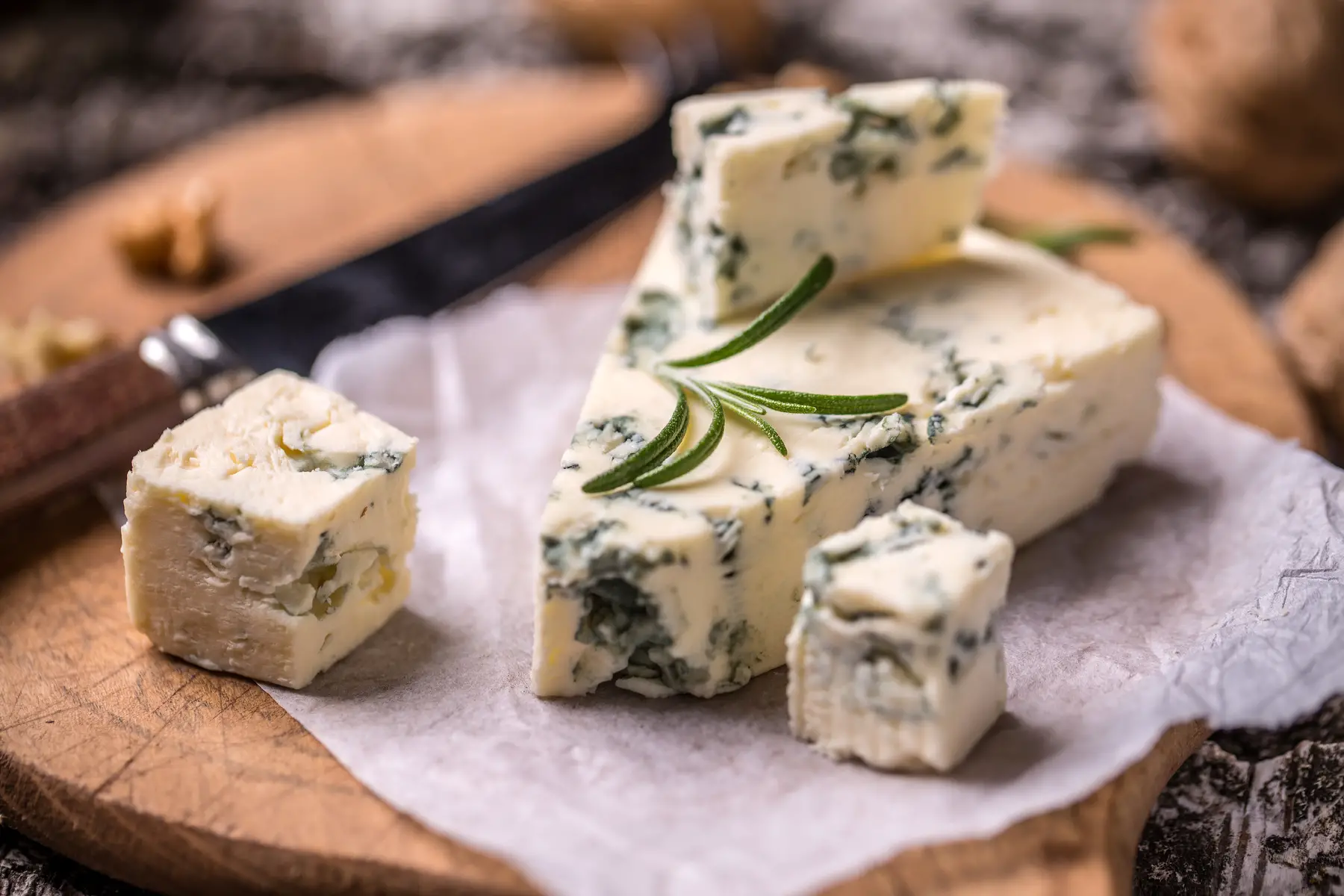
So how did this blue cheese come to be? Well, according to the history books, a young shepherd left his lunch behind for a beautiful lady. When he returned a few days later, his cheese had become moldy – and even more delicious. Now, Penicillium roqueforti is injected during fabrication to make the blue veins. As a result, these spores have a double benefit. They mellow the milk fat to create a more peppery tang, and they break down the protein for added creaminess. Roquefort is made in Roquefort-sur-Soulzon, a small village northwest of Montpelier. Although it has only 700 residents, there are, remarkably, over 100,000 cheeses aging at any given time!
Fourme d’Ambert
For those who aren’t fans of blue cheese, Fourme d’Ambert might change your mind. This creamy cow’s milk bleu is injected with a less pungent mold than Roquefort. As a result, you will find a more mild flavor that brims with earthy and mushroomy notes. It takes 20 to 25 liters of milk to make one of these cylindrical cheeses, a testament to how rich it is. You can crumble it on salads, pair it with pears, or nibble it alongside a glass of port.

Named after the ancient word for cheese (fourme, meaning wheel), this French cheese dates back to Roman times a millennia ago. It is, therefore, one of the country’s oldest. Interestingly, several artisanal producers are now using raw milk (lait cru) instead of pasteurized milk to produce Fourme d’Ambert. If you plan to buy some, look for fermier cheese which is made with milk from a farmer’s own cows. Fourme d’Ambert comes from Auvergne, a verdant, central region where many cows graze. Consequently, the Auvergne is home to five different kinds of AOC French cheese.
Soft French cheese
Camembert
Tasting like caramelized butter with a hint of mushrooms, it’s no surprise that Camembert de Normandie is one of the most famous French cheeses. Made with low fat raw milk, this soft cheese has an edible bloomy rind (croûte fleurie) that protects its creamy interior. Camembert de Normandie should be soft to the touch, not spongy. You can buy it affiné (ripened for 21 days) or à point (aged 30 to 35 days.) Importantly, the longer it ages, the creamier and more intense in flavor the interior becomes.
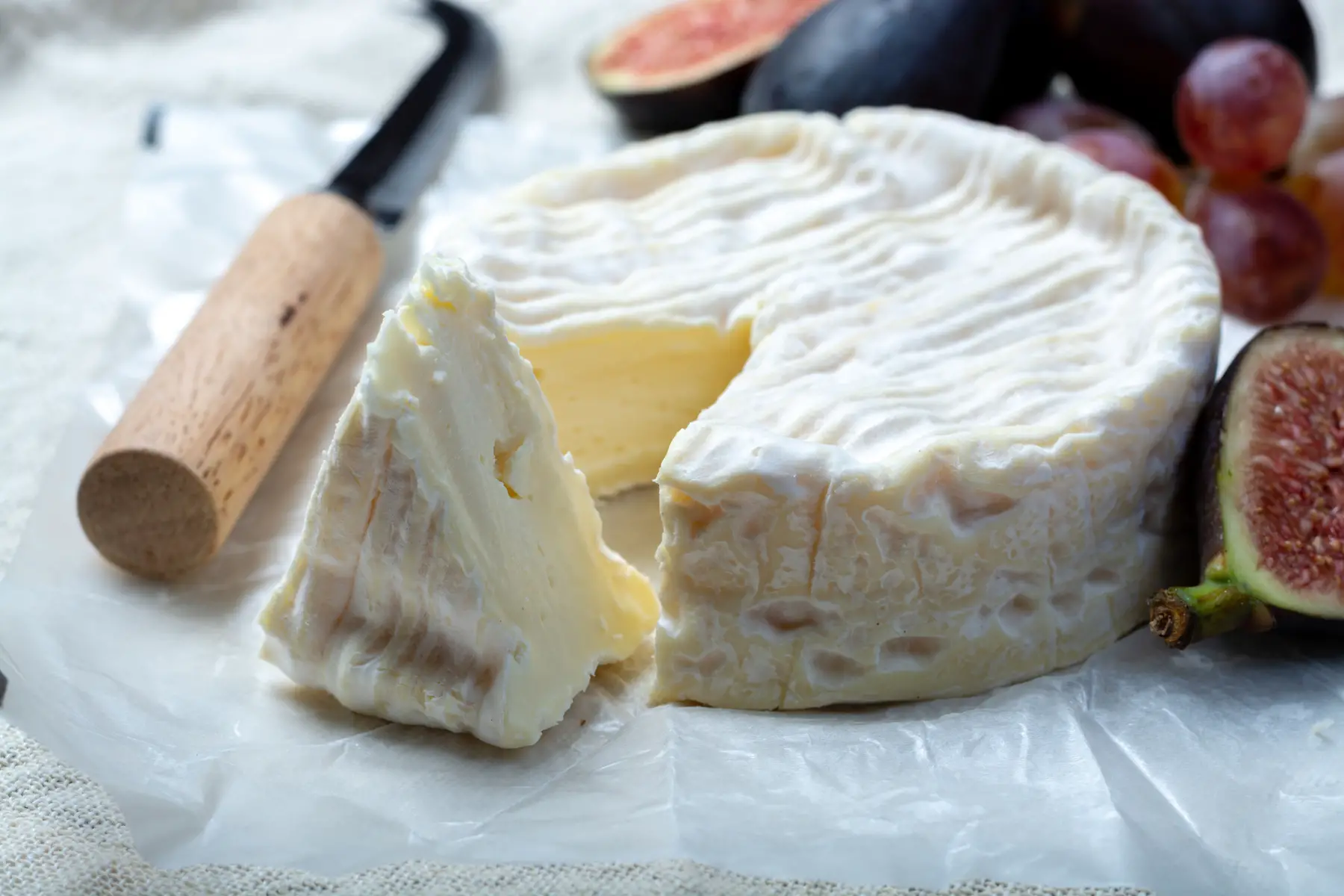
Camembert de Normandie is best eaten at room temperature or baked in its wooden box, alongside nuts or crusty bread. Alternatively, you can pair it with fellow Normandy specialties, cider, or Calvados. Be careful of industrialized copycats, though, and read the label closely. AOC ensures that the Camembert de Normandie is made with raw, not pasteurized, milk, and uses the louche (ladle) method that is so essential to its texture and taste.
Munster
Real Munster is a far cry from what American supermarkets sell. In France, it is a pungent, soft cheese that is either loved or loathed. This washed-rind cheese is brined and bathed in local Gewürztraminer (an aromatic white wine). As a result, the cheese has a signature reddish rind that adds to its tangy taste and strong aroma. If you find the rind too overpowering, however, then go straight to the cheese which is fruity and floral.
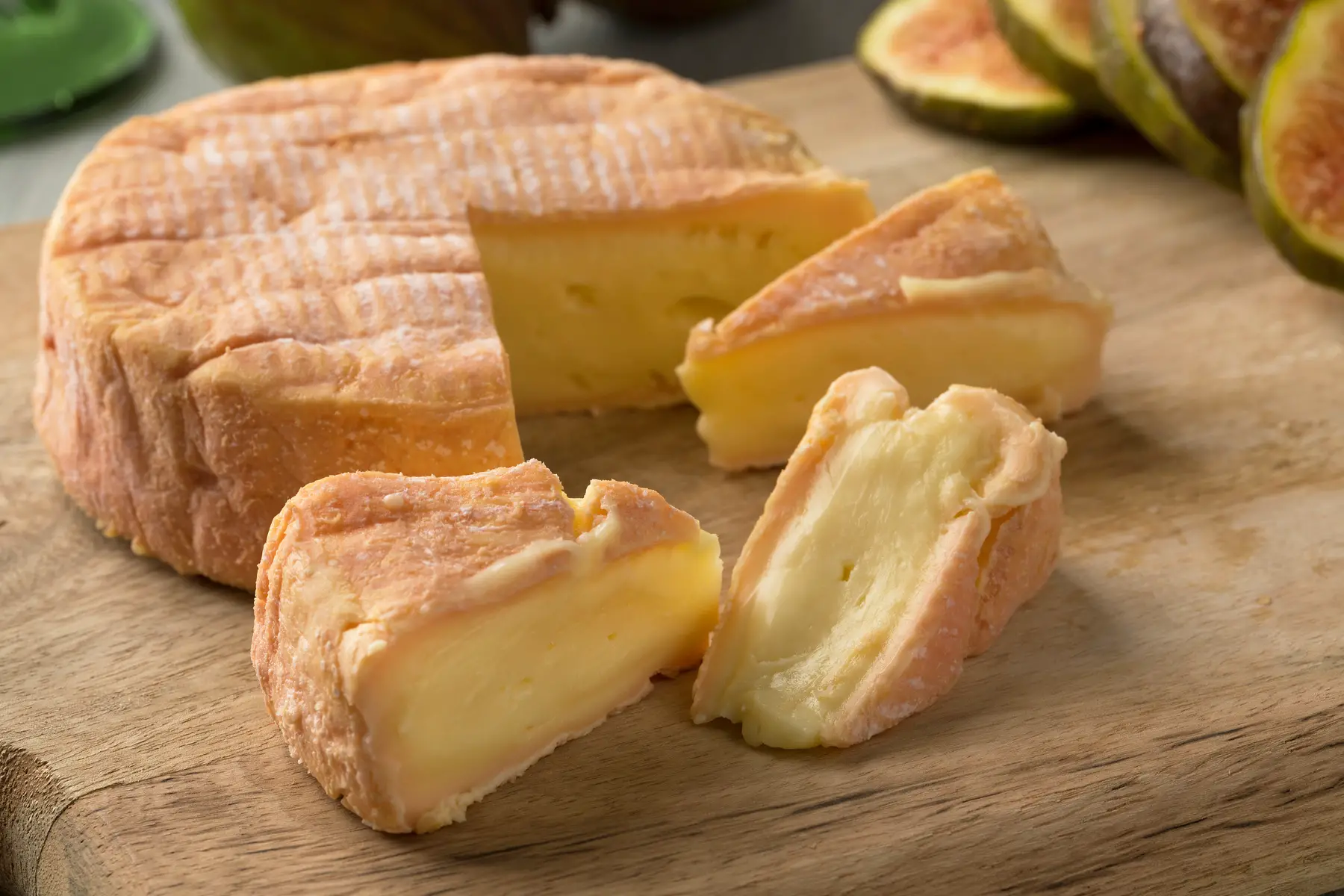
Notably, you can tell a Munster’s age by its color. The younger ones are pale pink while the older wheels are reddish-orange. However, you can also buy a variety that is flecked with cumin seeds. That said, any version is delicious with baked potatoes or a chunk of bread. Just like beer and Chartreuse, you can thank monks for Munster. In the Middle Ages, Irish monks in Alsace created the soft cheese as a way to preserve milk and feed the locals. Munster is still made across the region and is at its peak in the summer and fall. During this time, the cows relocate to high mountain pastures and create more flavorsome milk.
Hard cheese from France
Beaufort
This hard cheese hails from the postcard-perfect French Alps; more specifically the mountain pastures and high slopes of the Haute-Savoie. French philosopher Brillat-Savarin dubbed it the “Prince of Gruyères.” Since Beaufort is cooked at a lower temperature than other gruyères, it has a creamier texture and more pronounced floral flavors. Due to its mammoth size and weight (which can reach up to 130 pounds), farmers had to tie it to donkeys to transport it. Consequently, Beaufort has a characteristic shape with concave sides to keep the rope from slipping.
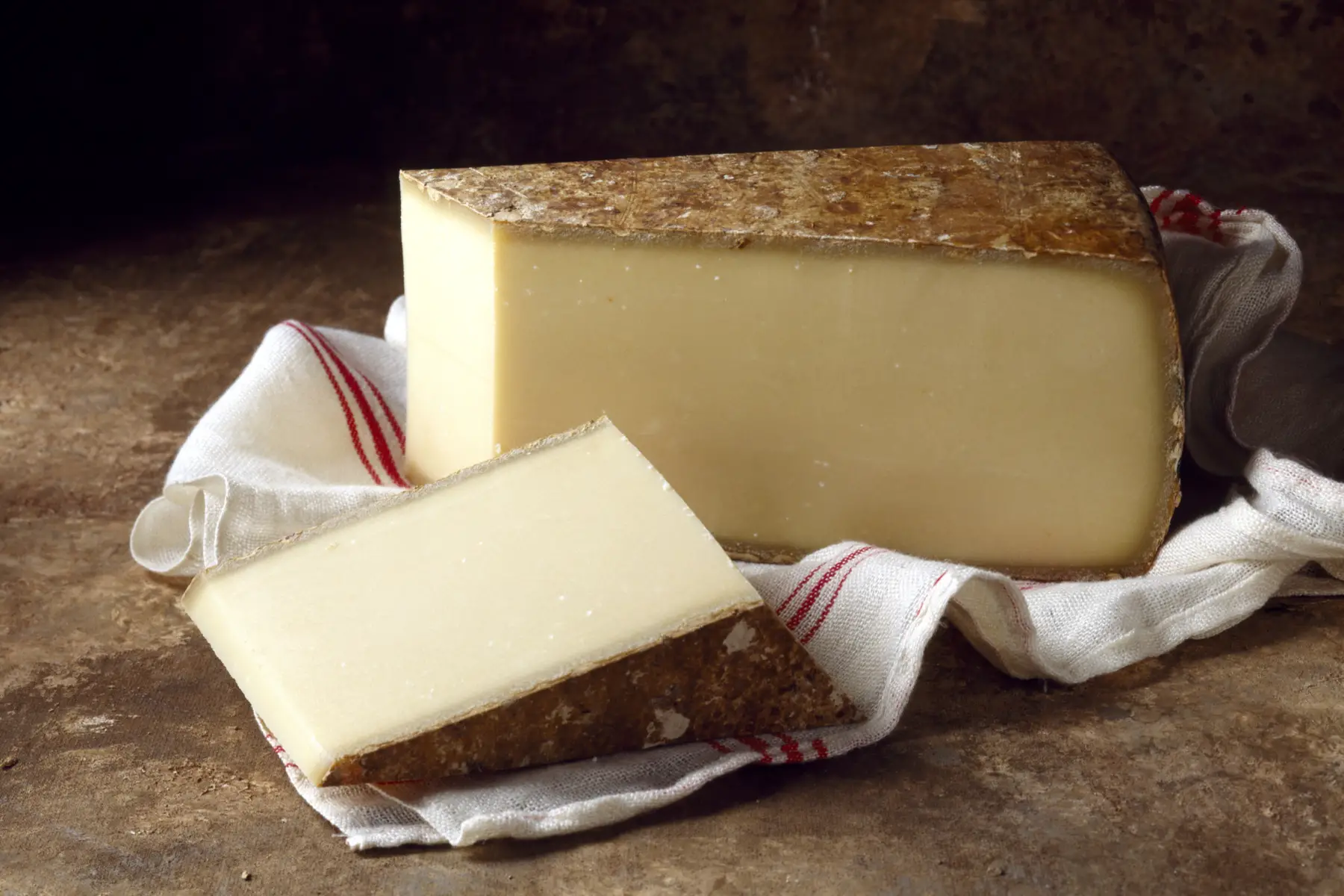
There are three kinds of Beaufort, which are each made with unpasteurized milk. The first kind, Beaufort d’été (summer), brims with wildflowers and herbs. The second, Beaufort d’hiver (winter), is lighter in color due to the cow’s diet of hay. And the third, the rarer Beaufort Chalet d’Alpage, is made in alpine chalets from only one heard of cows. It is as special as a single varietal wine. As the cheese ages, its buttery flavor becomes nuttier. You can enjoy it simply sliced or melted in fondue savoyarde.
Mimolette
With its electric orange hue and cannonball shape, Mimolette is bound to stand out on any cheese platter. Born from a ban on Dutch cheese during the France-Dutch war of 1675, this hard cheese was originally made in Lille. The French actually added natural food coloring, Annatto, to differentiate the Boule de Lille (as it is also called in France) from its cow’s milk cheese cousin, Edam.
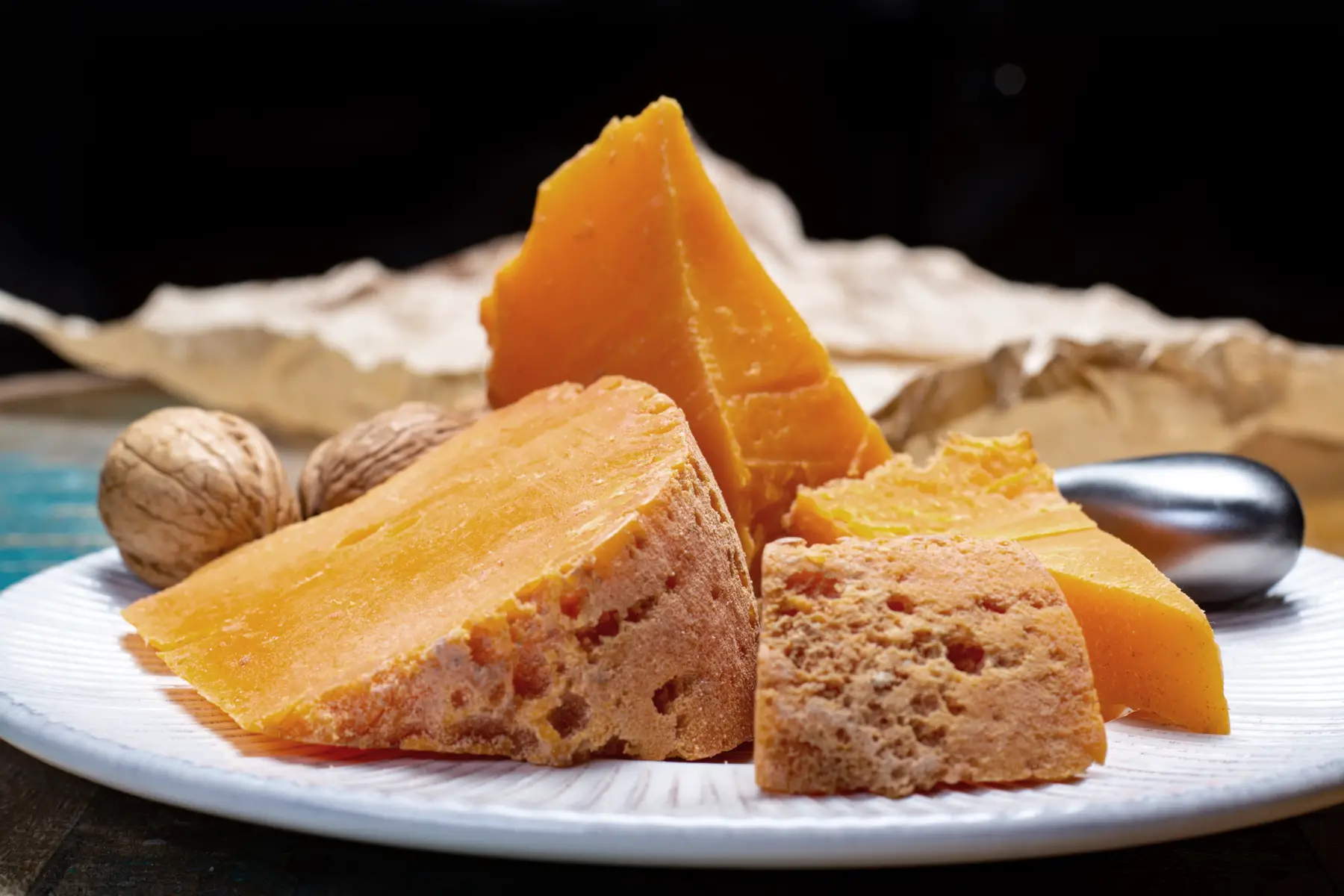
Young Mimolette resembles parmesan in taste and texture. However, the older versions, which are aged up to 24 months, are more popular. With age, their flavors take on a caramelized heft (think bacon or butterscotch), hazelnut notes, and a fudgy finish.
Cheese mites are actually responsible for Mimolette’s craggy exterior. Surprisingly, they play an important role in the aging process. Known as “tiny affineurs” (ripeners), these microorganisms burrow into cooked cheeses, leaving a sweet flavor in their wake. The French often use Mimolette as a cheddar substitute; for instance, they cut it into cubes or wedges for snacking, melt it in quiches, or use it as a topping for burgers.
Fresh French cheese
Faiselle
Faiselle is part of the family of fresh cheeses in France. It is made by fermenting milk with lactic acid, then draining the curds in a basket (fiscella is Latin for “little basket”). The result is luscious, fresh cheese that has a hint of sourness. The texture resembles thick cottage cheese or chunky yogurt. Above all, the flavor varies throughout the year, since fresh milk showcases wildflowers, grasses, and more.
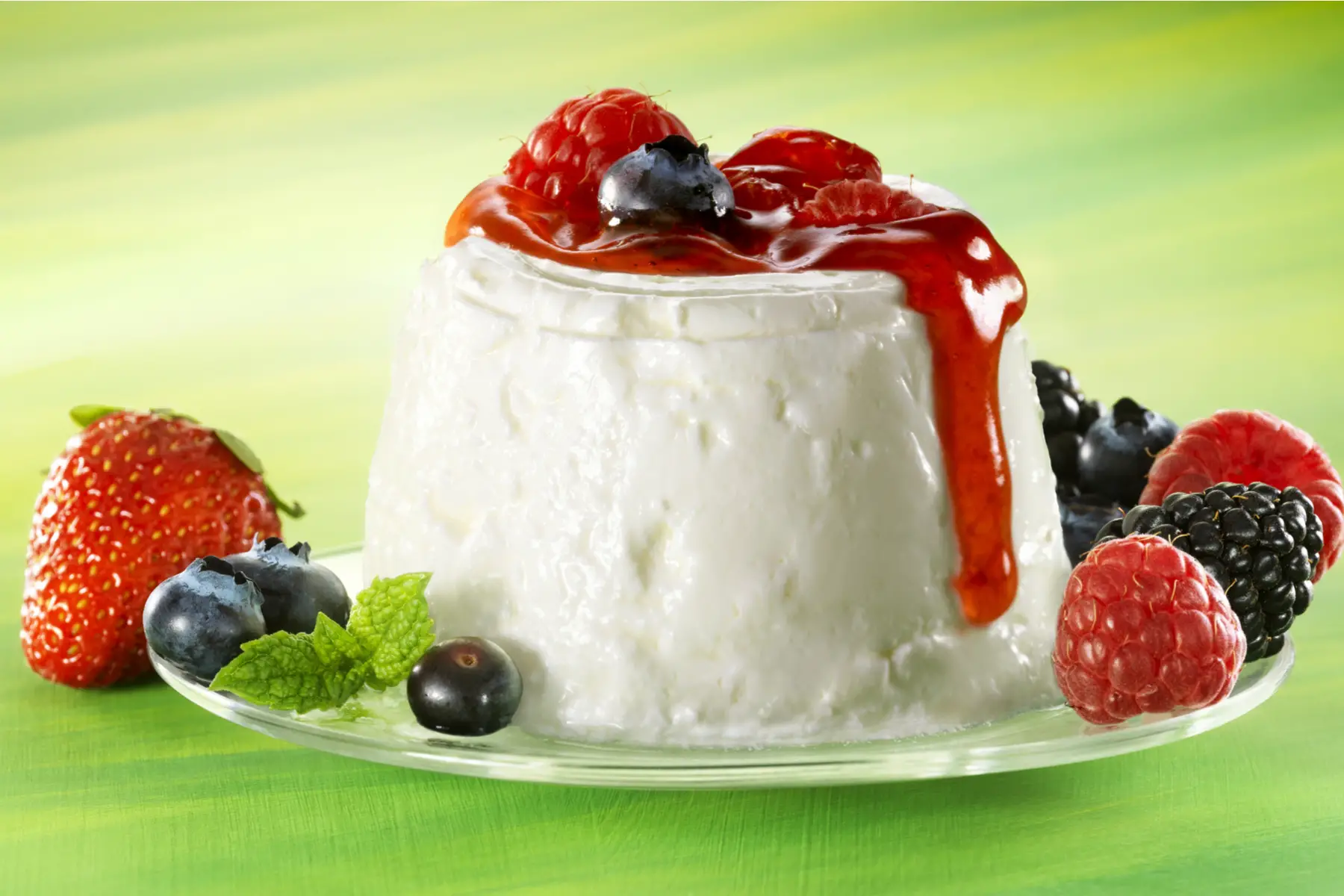
Versatile Faiselle is fabricated without salt. Consequently, you can enjoy it with sweet or savory accompaniments. You can mix it with chives for an appetizer or drizzle it with honey and fresh fruit for a light, summery dessert. Just try to avoid bland supermarket versions and instead, seek out this fresh cheese at farmer’s markets or fromageries. Notably, in France, you can find Faiselle that is made with cow’s, goat’s, or even sheep’s milk that is raw or pasteurized.
Cervelle de Canut
This lovely, light cheese provides a welcoming break from the classic heavy dishes that are featured in Lyonnaise cuisine. To make Cervelle de Canut, a mix of fresh goat’s milk faiselle and cream is whipped with finely chopped shallots, herbs, olive oil, and vinegar. Fortunately, you can buy it in shops outside of Lyon, too. That said, some French people prefer to make their own at home.
If you Google the name of this French cheese, you might get confused with the result – “silk weaver’s brain.” Some people believe that this refers to a sneer from the rich Lyonnais against the working-class canuts. Others, however, think that it is due to the fact that the canuts couldn’t afford real lamb brains. Regardless of the origins of its name, though, you can thank the silk weavers for this gastronomic delight. They ate Cervelle de Canut as a mid-morning snack (mâchon), which was necessary to fuel their incredibly laborious work.



